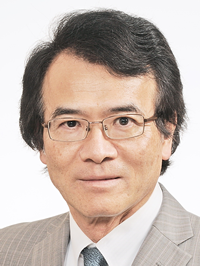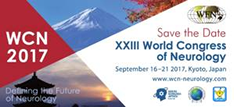Greetings

Masanobu Kano, M.D., Ph.D.
President
The 40th Annual Meeting of the Japan Neuroscience Society
Department of Neurophysiology, Graduate School of Medicine,
The University of Tokyo
Neuroscience 2017, the 40th Annual Meeting of the Japan Neuroscience Society, will be held at Makuhari Messe over a three-and-a-half-day period from July 20 (Thursday) to the morning of July 23 (Sunday), 2017. In addition, public lectures will be held on the afternoon of July 23.
When the First Annual Meeting was held in 1978, it was a relatively small assembly of neuroscience researchers from established disciplines such as anatomy, physiology, pharmacology, biochemistry, and biophysics. In the subsequent decades, neuroscience has made marked progress by engaging in intense cooperation and integrated research activities with other disciplines, including molecular biology, cell biology, computational science, engineering, and psychology, as well as clinical neurosciences including neurology, psychiatry, neurosurgery, and rehabilitation medicine. In parallel with these developments, the annual meeting has steadily grown, both in terms of the number of participants and the diversity of their research fields. Consequently, the conference has grown into a major forum where basic, applied, and clinical neuroscientists can present their findings and exchange information about their research. Today, neuroscience spans multiple disciplines of life science, medicine, engineering, and humanities, and has the potential for limitless expansion in the future. The motivation for the continuous development of neuroscience is presumably derived from our fundamental desire to understand the brain functions that underlie the mind, and our calling to overcome the neurological and psychiatric disorders that are becoming increasingly important issues in modern society. To achieve these goals, neuroscientists have introduced a wide variety of new methods and are constantly creating technological innovations. These novel approaches include not only technologies common to life sciences, such as genome editing and iPS cells, but also techniques specific to neuroscience research such as optogenetics, imaging of activity in neuronal populations, and non-invasive imaging of brain structure and activity. As a result, neuroscience is constantly changing, promoting interactions with related research fields, and making progress toward the future. As the theme for Neuroscience 2017, we chose “Pushing the Frontiers of Neuroscience,” with the hope that participants will perceive the infinite potential of neuroscience. Large-scale projects to elucidate the connectivity and function of the whole brain are now underway in the USA, Europe, and Japan, and similar efforts are planned or under development in other countries. Therefore, we expect that exciting new results from these studies will be presented at Neuroscience 2017.
Along these lines, we are planning a program that will allow participants to engage with the forefront of research in their own specialties, as well as obtain a broad range of information in various research fields and disciplines of neuroscience. Accordingly, we feature plenary lectures and special lectures by top neuroscientists who are “Pushing the Frontiers of Neuroscience,” and we have enhanced the contents of symposia and educational lectures. We encourage active participation by female and junior neuroscientists, as well as oversea scientists, especially those from neighboring Asian countries. We sincerely hope that our annual meeting will provide a forum where participants can obtain up-to-date information, present their exciting new findings, interact with their peers, and eventually contribute to “Pushing the Frontiers of Neuroscience.”


